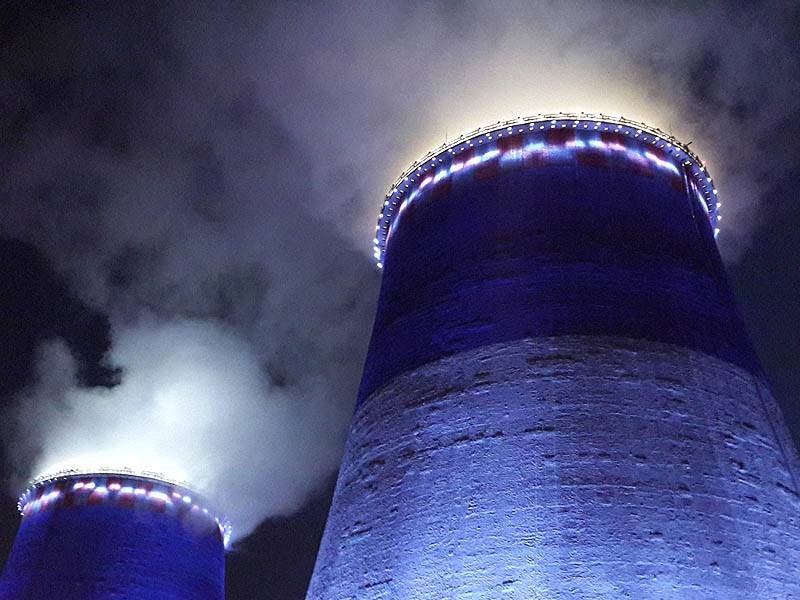In 2016, as part of a recent upgrade, the cooling towers No. 4 and No. 5 were provided with a specific façade coating, followed by the arrangement of an architectural lighting system capable of meeting the technical requirements and specifications of the facility. Each of the two illuminated hyperboloid structures is a giant pipe with a base diameter of 72 meters, an upper diameter of about 41 m, and a total height of 82 m.
According to the developed lighting concept, the dynamic color changing illumination of the exterior surface of the cooling towers had to take into account the texture and color of the applied coating. The lower part of the towers has been painted in light grey, while the upper part in blue. The top crown presents a grey and red check pattern. It is important to notice that, for the first time in Russia, a customer agreed on the possibility to apply, to this kind of strategic industrial facility, a dedicated illumination not only to the structure walls but also to the steam cloud emitted by the cooling towers.
200 units of POWERSHINE MK2 S RGBW have been installed around the whole perimeter of the two cooling towers at a height of 5 m from the ground on specifically designed mounting structures. Located at a very short distance from each other, these fixing supports have been painted in the same grey color as the tower coating and have been further protected by a sub-layer of zinc. Supplied with spot, narrow or elliptical optics, the powerful LED fixtures selected easily reach the top of the structure providing optimal light output levels and remarkable color distribution evenness.
